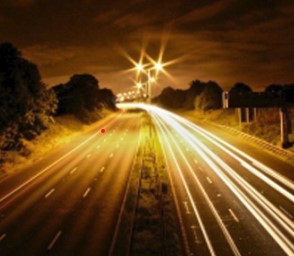 If you’ve ever read an article on your computer screen and stopped to realize you have no idea what you just read, you’ve experienced something similar to highway hypnosis.
If you’ve ever read an article on your computer screen and stopped to realize you have no idea what you just read, you’ve experienced something similar to highway hypnosis.
A commuter train engineer told investigators he was in a “daze” moments before the Dec. 1 derailment that killed four people in New York City. That could have been highway hypnosis, experts say.
“When we’re tired, effectively there’s a change in the state of our brain that results in that information just not getting to those centers where we actively, consciously process it,” said Sean Meehan, a University of Michigan kinesiology professor.
A person who has lapsed into highway hypnosis is experiencing slowed brain activity, Meehan said, meaning different parts of the brain aren’t communicating with one another as frequently as when the person is fully conscious. It’s actually similar to the brain activity of someone who is asleep, and is most likely to occur in a  driver who is tired, he said.
driver who is tired, he said.
As a result, the driver’s reaction time is slowed, he said.
“I’m sure most people experienced this on a long trip where they all of the sudden realize they really haven’t been aware of what they’re doing,” said Meehan, who is currently working with the Hyundai-Kia Technical Center to determine the feasibility of a device that would tell car drivers when their brain activity has slowed.
Going into this autopilot-like mode often happens on long, mundane highway drives with few turns or traffic signals, Meehan said. The driver usually can’t recognize highway hypnosis until his environment is somehow jostled — another car cuts him off or he hits a bump.
Drowsy driving results in more than 100,000 crashes a year, resulting in 1,550 deaths, according to the National Highway Traffic Safety Administration. Highway hypnosis often gets lumped into drowsy driving because it happens in tired drivers, Meehan said.
 Still, a highway isn’t the only place it can happen. It can happen on a train, Meehan said, though it hasn’t been blamed for any other train accidents to his knowledge. It can also happen at your desk when your eyes gloss over a work document and you realize you didn’t comprehend it.
Still, a highway isn’t the only place it can happen. It can happen on a train, Meehan said, though it hasn’t been blamed for any other train accidents to his knowledge. It can also happen at your desk when your eyes gloss over a work document and you realize you didn’t comprehend it.
To prevent highway hypnosis on the road, Meehan suggests taking a break every 90 minutes or so, or — if you’re lucky enough to be driving with someone else — switch drivers.
Listening to the radio isn’t enough to prevent this daze, and can even contribute to it, he cautioned. And always get at least six hours of sleep the night before a long trip, he said.
The University of Kansas Transportation Center published guide for rural transit drivers to avoid driver fatigue. In addition to Meehan’s tips, it suggests keeping the vehicle cool and maintaining good posture to stay alert.
By Sydney Lupkin








